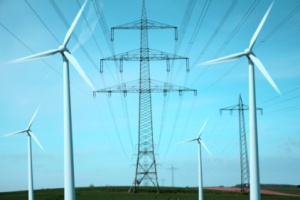
Being a relatively young industry, specific issues such as skills shortages and a lack of consistent procedures and standards also have an impact on OSH. A new report introduces the wind energy sector and examines how its specific issues impact on OSH. It looks at the particular risks faced by workers during the various stages of the wind turbine life cycle, both onshore and offshore, and outlines the challenges ahead for the industry.
Wind energy is renewable and clean, and produces no greenhouse gas emissions. In 2012, it accounted for 11.4 % of the European Union’s (EU’s) power capacity and 26.5 % of all new power capacity in Europe (EWEA 2012a).
As the EU power sector continues its move away from oil, coal and nuclear fuels, wind energy has experienced tremendous growth over the past decades, and this is expected to continue.
Annual installations of wind power have increased steadily over the past 12 years, from 3.2 gigawatts (GW) in 2000 to 11.9 GW in 2012, a compound annual growth rate of 11.6 %. In 2010, there were 70,488 onshore wind turbines and 1,132 offshore turbines across the EU (European Wind Energy Association, 2013). A total of 106 GW is now installed in the EU, an increase in installed cumulative capacity of 12.6 % compared with the previous year. The wind power capacity installed by the end of 2012 would, in a normal wind year, produce 231 terawatt-hours of electricity — enough to cover 7 % of the EU’s electricity consumption. The total number of wind turbines worldwide at the end of 2012 was around 225,000, spread over 79 different countries (Global Wind Energy Council, 2013).
In its recently published research agenda (EWEA, 2010), the European Wind Energy Technology Platform (TP Wind) proposes an ambitious vision for Europe. In this vision, 300 GW of wind energy capacity will be implemented by 2030, representing 25 % of the EU’s electricity consumption. Moreover, the TP Wind vision includes a sub objective on offshore wind energy, which it believes should represent 10 % of EU electricity consumption by 2030. Wind energy is a mainstream renewable power source and, if the right steps are taken, this source will be essential in meeting Europe’s 2020 renewables target, tackling climate change, strengthening energy security and creating new jobs (Europa, 2009).
At present, the European wind energy sector provides jobs for 192,000 people, and many more well-trained workers are needed in areas ranging from manufacturing to project management. It has been
predicted that by 2020 there will be 446,000 jobs in the wind energy sector in Europe (EWEA, 2012b).
With an increasing number of workers now employed in various aspects of the wind energy sector, occupational safety and health (OSH) becomes a prime concern. Many aspects of siting, erecting, maintaining, servicing and possibly dismantling wind turbines are unique, and even if most of the job hazards that these workers will face are not, the working environments and combinations in which they are found create unique challenges. New technologies or working processes associated with wind energy will also lead to new hazards, which call for new combinations of skills to deal with them (EU-OSHA, 2013).
Wind energy is a relatively ‘new’ industry, and some of the workers may not be fully aware of the hazards that exist in this work environment. In addition, the speed at which the EU wind industry is expanding could lead to skills gaps, with inexperienced workers involved in processes for which they have not been trained, and who therefore put their safety and health at risk.
Although wind energy is considered ‘green’ and good for the environment, it does not necessarily mean it will be good for the health and safety of workers.
Wind energy workers can be exposed to hazards that can result in fatalities and serious injuries during the various phases of a wind farm project. The objective of this report is to provide an in-depth and comprehensive overview and analysis of the OSH challenges in the wind energy sector in order to raise awareness and thereby support good OSH, so that the jobs in this sector are jobs that provide safe and healthy working conditions.
OSH issues associated with working in remote areas, extreme weather conditions, confined spaces, awkward postures, electrical risks, falls from height, musculoskeletal disorders, physical and psychosocial loads, various aspects of work organization and exposure to dangerous substances (e.g. at the production stage but also during maintenance operations) are included.
https://osha.europa.eu – download full PDF report
More information on the European Union is available on the Internet (http://europa.eu).
More information on the European Union is available on the Internet (http://europa.eu).



